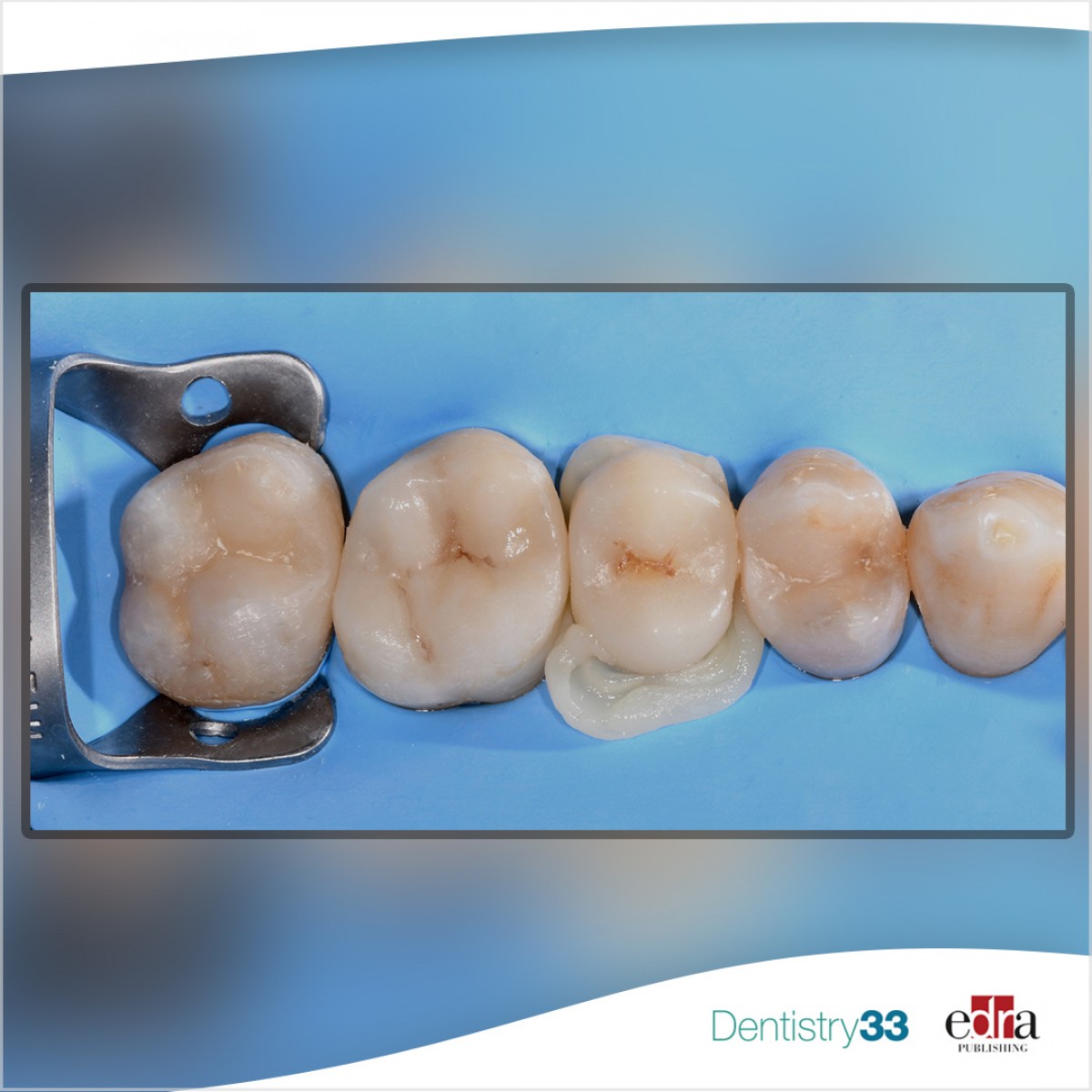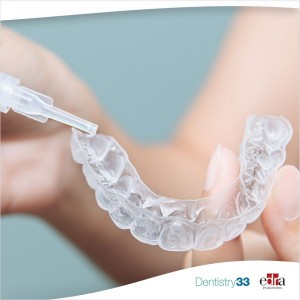
Resin composite blocks for indirect restoration: which material to choose for luting procedures?
Simona Chirico
Resin composite materials, with their excellent mechanical properties and aesthetic properties, are now considered the materials of choice in dental restorations. In addition to direct fillings, composites are also indicated for indirect restorations, which differ from direct restorations in the method of polymerization that is performed in the laboratory. This causes a greater degree of monomer conversion and less shrinkage, limiting the volumetric shrinkage to the thin layer of concrete.
The cementation process of indirect inlays is considered a critical step determining the longevity of the restoration itself. It may be difficult to choose the most appropriate resin cement to use.
Resin cements can be classified, depending on the pretreatment of the tooth substrate and the treatment of the smear layer, into etch-and-rinse,
self-etch and self-adhesive.
Materials and methods
In the study by Radwa et al, the authors evaluated the five-year clinical performance of indirect composite inlays cemented with three different resin cement strategies in class II MODs. This study was conducted following the CONSORT guidelines. Forty patients with three large cavities indicated for indirect MOD class II restorations were enrolled in the current study. Then, 120 indirect composite inlay restorations (SR Nexco) were placed and cemented with three different resin cement strategies (n = 40); an etch-and-rinse cement (Variolink N), a self-etch cement (Panavia F2.0) and a self-adhesive cement (RelyX Unicem). These restorations were evaluated at 1 week (baseline), and at 1, 3 and 5 years using modified USPHS criteria. Statistical analyzes were performed with Wilcoxon and Friedman tests with significance level set at 0.05.
Results
For all groups, no loss of restorative material or recurrence of caries was reported after five years of follow-up. In both the self-etch Panavia F2.0 group and the RelyX Unicem self-adhesive group, the resin cements showed significant differences between the evaluation periods for marginal discoloration and marginal adaptation (p = 0.03). At baseline, only in eight cases belonging to the etch-and-rinse resin cement group (Variolink N) did the authors note a post-operative sensitivity which was alleviated after a short time (p = 0.04). Conclusions
All three resin cement strategies tested show acceptable clinical performance after five years. However, the etch-and-rinse resin cement group has shown improved clinical performance over time with marginal discoloration and marginal adaptation for a follow-up period of five years. The authors concluded that etch-and-rinse resin cement still has the best prognosis for adhesive luting of indirect resin composite inlays.
Radwa I. Eltoukhy, Ali A. Elkaffas, Ashraf I. Ali, Salah H. Mahmoud. "Indirect Resin Composite Inlays Cemented with a Self-adhesive, Self-etch or a Conventional Resin Cement Luting Agent: A 5 Year Prospective Clinical Evaluation." J Dent. 2021 Sep;112:103740. doi:10.1016/j.jdent.2021.103740. Epub 2021 Jul 4.
 Related articles
Related articles
Resin composite materials, with their excellent mechanical properties and aesthetic properties, are now considered the materials of choice in dental restorations. In addition to direct fillings,...
Resin composite materials, with their excellent mechanical properties and aesthetic properties, are now considered the materials of choice in dental restorations. In addition to direct fillings,...
Periodontology 20 November 2024
The objective of this study was to evaluate the clinical effectiveness of platelet-rich f ibrin (PRF) membrane used in combination with a modified coronally advanced f lap (MCAF) and to compare it...
Oral pathology 03 June 2024
Stress and anxiety are emotional states that often accompany patients who have to receive dental treatments, leading them to postpone or avoid treatments with the consequent deterioration of their...
This study answered the research question “Is the risk of tooth sensitivity lower when calcium-containing bioactive desensitizers are used with dental bleaching in adults compared with...
 Read more
Read more
Much like EMTs rushing to the scene after an accident, stem cells hurry to the site of a skull fracture to start mending the damage. A new finding has uncovered the signaling mechanism that triggers...
Products 05 November 2025
SimplyTest has launched a groundbreaking saliva-based test to detect high-risk strains of oral human papillomavirus (HPV), a major cause of oropharyngeal cancers.
News 05 November 2025
Perimetrics, Inc., a dental technology company pioneering quantitative diagnostics, announced today that the U.S. Food and Drug Administration (FDA) has granted clearance for the InnerView...
News 05 November 2025
On October 15, open enrollment for Medicare began nationwide. Hundreds of thousands of seniors in New Jersey will once again face the challenge of finding the right Medicare coverage, including the...
Digital Dentistry 04 November 2025
Digitalisation is an expanding field in dentistry and implementation of digital teaching methods in dental education is an essential part of modern education.















